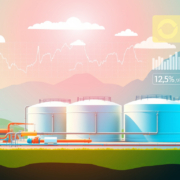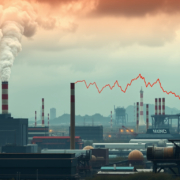Resilience Amidst Turbulence: OMERS Achieves 2.2% Return in a Challenging Investment Landscape
OMERS Records 2.2% Return Amid a Challenging First Half of 2025
By Barbara Shecter | Published August 21, 2025
OMERS, the Ontario Municipal Employees’ Retirement System, is one of Canada’s largest pension funds. It earned a modest 2.2 percent investment return in the first half of 2025. The fund worked through a tough global economy. It faced uncertainty. It had major exposure to the United States.
Navigating a Difficult Market Landscape
OMERS gained $3.1 billion between January 1 and June 30, 2025. This gain raised its net assets to $140.7 billion. Global economic instability and volatile markets hit it hard. Still, the fund stayed positive in public and private investments.
More than 55 percent of its assets are in the U.S. This market felt shocks from recent global trade policy changes. The Trump administration’s tariffs made things worse. These factors made investing very hard. OMERS CEO Blake Hutcheson said this environment was especially challenging.
“OMERS had a positive start in what was a particularly challenging environment for investors,” he said. “We look at short-term problems while working in both public and private investing. Our team finds opportunities that add value now and later.”
Currency Impact and Hedging Strategies
Currency shifts also played a role. The U.S. dollar fell by over five percent in the first half. This drop hurt returns, even with some hedging in place. The change contributed a -1.2 percent effect to the overall numbers.
Yet, hedging was very helpful. Jonathan Simmons, OMERS’ Chief Financial and Strategy Officer, said, “Our active choice to hedge currencies raised returns by almost one percent. These moves protected portfolio value.”
Investment Performance Across Asset Classes
Over the past five years, OMERS earned an average annual net return of 8.7%. Over ten years, the return averaged 6.9%. In total, gains reached about $70.2 billion.
In early 2025, infrastructure and public equities drove returns. Six out of seven asset classes, including credit and bonds, added positively. However, private investments—especially private equity—fell, with a -1.3 percent performance.
Simmons explained, “Uncertainty in the global marketplace stops private investment valuations. Private equities and real estate have seen fewer transactions.”
Real Estate Portfolio: Signs of Recovery Amid Market Pressures
Real estate makes up about 15 percent of OMERS’ portfolio. This segment earned a 1.1 percent return in the first six months. Many Canadian pension funds suffer because office buildings struggle. Remote and hybrid work since COVID-19 hurt demand.
OMERS stays hopeful for real estate. The fund said, “Results were supported by strong operating fundamentals, especially in office and hotels.” This suggests that the market may stabilize soon.
Legal Actions Related to Retail Property Leases
Oxford Properties, the real estate arm of OMERS, has started legal actions. These actions deal with lease agreements from the insolvent Canadian retailer Hudson’s Bay Company. In early August, Oxford filed a court document. The document opposed shifting leases to an untested entrepreneur. It warned that such moves could hurt asset stability, reputation, and performance.
The filing stressed that keeping the portfolio stable is crucial. A decline could hurt the pension fund and its millions of beneficiaries.
Looking Ahead
OMERS moves through a complex investment scene. Its challenges come from economic and geopolitical issues. Even with modest gains in the first half of 2025, its diversified strategy and active management aim to build long-term value for beneficiaries.
Contact:
Barbara Shecter
Email: bshecter@nationalpost.com
This article is part of ongoing coverage by the Financial Post on Canadian pension funds and investment markets.
Full money-growing playbook here:
youtube.com/@the_money_grower









